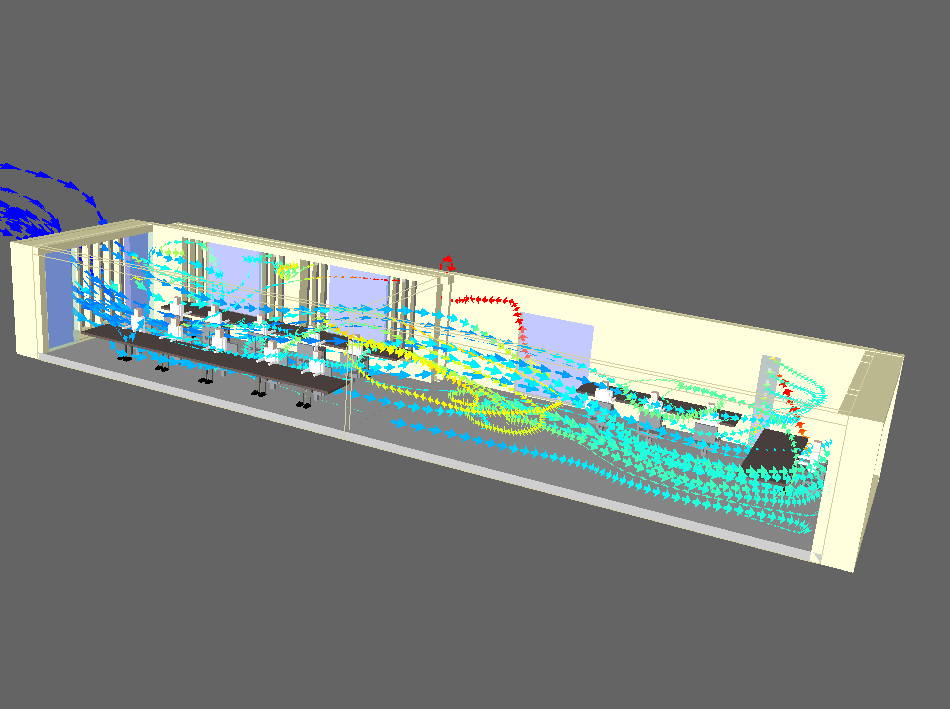We are often asked, “What makes a healthy home?” Our answer is summed up in five simple principles:
- Continuous clean air
- Airtight and proper insulation
- Non-toxic materials and products
- Cleanable surfaces
- Healthy home habits
Continuous clean air
Most people are surprised to learn that the air in their homes is not “clean air.” The air inside your home is a concentrated version of what’s outside your home (including pollution and pollen) plus what escapes from the basement or through the heating/cooling system as well as any cracks and crevices. Add to that all the chemical smells from cleaning and personal care products as well as increased humidity from bathing, laundry, and cooking, and you’ll easily see that the air you breathe in your home can’t be described as clean.
Opening windows can be helpful, but they really only provide clean air near the open window. When your windows and doors are closed, you can get continuous clean air through a forced-air ventilation system, which is installed inside your home, draws air in through ducts, filters it, and then quietly distributes it evenly throughout your home. At the same time, this system will quietly push out stale, smelly air from the bathroom, laundry room, and kitchen. This helps to keep the air clean and moving throughout your home.

Airtight and proper insulation
To prevent bad air and moisture from seeping in, you need to eliminate air leaks through the floors and walls as well as the basement, attic. You want to make sure your home is well-sealed with non-toxic foam, caulk, and moisture barriers as needed to ensure your family is not exposed to ventilation from the dark, damp areas of the home. When building new, use a breathable membrane, which prevents most water and air leaks but still allows the home to breathe. Sealing also prevents pests and rodents from entering your living space and impacting air quality.
Proper insulation is also important. It not only makes your home more comfortable and energy-efficient but also helps to eliminate cold spots in your home, where moisture builds up and makes the air unhealthy.
Non-toxic materials and products
When thinking about how you’re exposed to toxins in your home, you need to think broadly. Your home isn’t built from just one type of material, and you may not just have one cleaning product. If you’re like most people, your home contains hundreds of different building materials, cleaning and personal care products, furniture and carpeting, scented candles, etc. While any one product is unlikely to cause a problem unless you’re sensitive to chemicals or have allergies, the accumulation and mixing of chemicals can put a strain on your health.
Reduce or eliminate as many chemicals as possible in your home to avoid breathing them in. This means using low- or non-toxic paint and building materials, eliminating indoor sources such as air fresheners, scented candles, chemically scented cleaning products, laundry detergent, and personal care products, choosing formaldehyde-free flooring and flame-retardant-free upholstered furniture. Be careful when storing personal care items or cleaning supplies in the bedroom or under a sink in a bathroom without ventilation. We recommend storing paint and pesticides away from home, but if you can’t do that, make sure the lids are tightly closed and containers are intact and place them away from forced-air systems.
Cleanable surfaces
Carpets, curtains, upholstery, and bed sheets are perfect breeding grounds for bacteria and dust mites, and they also act as magnets for human allergens including dust and pollen. To have a healthy home, maximize smooth, easy-to-wipe surfaces by replacing wall-to-wall carpeting with smooth flooring and fabric curtains with non-fabric alternatives.
If replacement isn’t an option, it’s best to vacuum carpets regularly with a genuine HEPA vacuum cleaner and deep clean both carpets and curtains regularly according to manufacturer instructions using non-toxic cleaning products. Bedding should be washed frequently in hot water.
Healthy home habits
Healthy homes require healthy habits from the people who live in them. Remember to turn on the bathroom exhaust fan during and for at least 20 minutes after bathing. Run the kitchen exhaust fan every time you cook – even if you’re just boiling or simmering – and choose glass and cast iron or ceramic cookware. Vacuum with a HEPA vacuum cleaner at least once a week if you have carpet or more often if you have pets or high-traffic areas.
Other easy habits: take off your shoes as soon as you walk in the door, change your air conditioner filter at least 3-4 times a year, and dust with a static-free cloth or microfiber cloth over the tops of doorways, windows, framed artwork, ceiling fans at least a few.
Tags






